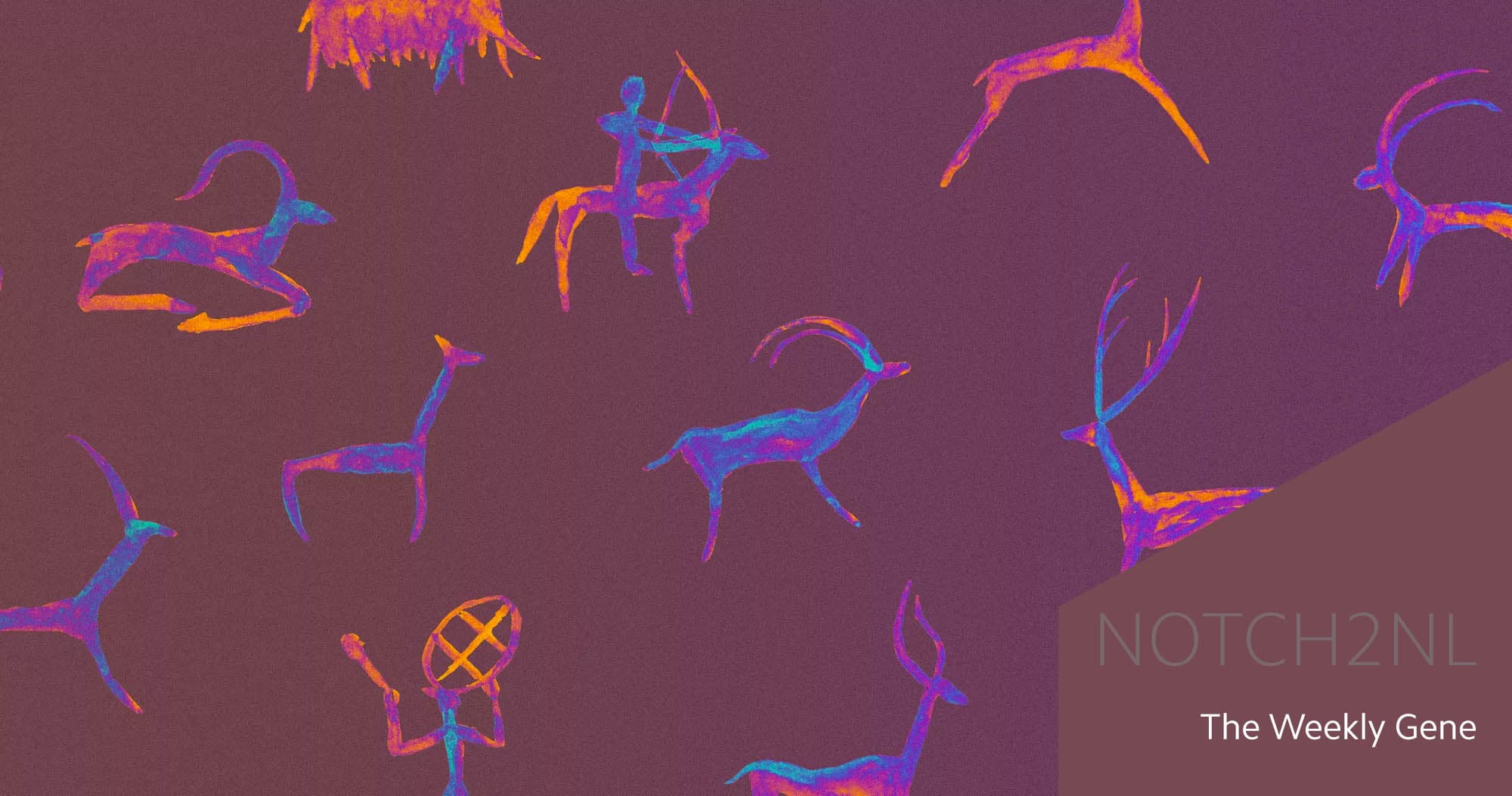How’d the human brain get so big?

Why do humans have a big brain? True, it’s not as big as it is in some animals, and we’re by no means the most complex beings on the planet. However, humans have significantly larger brains than other primates despite the fact that we’re so genetically similar. So why is that? This question has been asked for decades, but a recent development suggests that the NOTCH2NL gene family may be part of the answer.
It almost goes without saying, but the process of forming a fully functioning brain is incredibly complex and many researchers are still trying to understand it. We know that it requires more than one gene—many more, actually! Throughout development, there is a genetic symphony happening in which genes are turning on and off at specific times, in specific locations, and in specific combinations. Together, these genes regulate what types of neurons are produced and in what quantities. This is important because changes in the DNA coding for these genes can affect neural development—similar to how a change in the orchestra can change the symphony’s sound. With this in mind, scientists are actively looking for clues in the DNA to learn about evolution of the human brain.
Relative to other primates, humans have a pretty big brain. Our DNA sequence is strikingly similar to chimpanzees—almost 96% of it is identical. Its reasonable to assume then that somewhere in that 4% difference is the answer as to how humans came to have a larger brain.
Want more on human evolution?
Check out our other articles here! >
The NOTCH2NL gene belongs to a family of closely related DNA sequences known as the Notch genes and the Notch-like genes. This group of genes collectively plays an important role in human physiology by helping cells communicate with one another through both direct and indirect methods. Research into brain development has shown that Notch genes are turned on in a special group of cells called progenitor cells—meaning they can generate new cells of a specific type—that ultimately produce neurons. In these cells, the NOTCH2 gene promotes higher numbers of these neuron-producing cells and thus has the potential to increase brain size. The NOTCH2 gene is not unique to humans; however, the Notch2-like gene family (NOTCH2NL) are1,2.
Evolution’s plagiarism
Evolution occurs as changes in a species’ DNA sequence accumulate over time.
Dr. Susumu Ohno suggested that gene duplication was part of this process. His reasoning was that segments of DNA may accidentally be duplicated within a genome (sometimes it’s entire chromosomes or even the entire genome). Once duplicated, the gene may accumulate more dramatic changes to its DNA sequence, because there is a backup copy to fulfill the original function of the gene.
Decades later, we’re seeing that Dr. Ohno was right, and gene duplication is a part of the evolution process.
Analysis of the NOTCH2NL gene shows that it is actually just a duplication of the NOTCH2 gene (four duplications, to be exact). Evidence suggests that a common ancestor between chimpanzees, humans, and gorillas once existed. In this primate, the Notch2 gene became duplicated, but the duplicate version was likely non-functional. About 3-4 million years ago, after humans evolved away from chimps and gorillas, changes in the DNA sequence of this duplicate gene led to its awakening1. Over time, the gene would be duplicated three more times and each one would have its own unique assortment of variants. These duplicates are known as the NOTCH2NL family of genes and can be found in multiple human lineages including Neanderthals and Denisovans1. Recent research strongly suggests that these genes help increase NOTCH2 activation during brain development—meaning that NOTCH2NL genes may help humans develop increased brain mass relative to chimps1,2. More research is needed to understand this process and how humans came to have such a duplication, but the current evidence provides us with some exciting new avenues of research.
Advances in DNA sequencing technology have enabled scientists to discover the NOTCH2NL genes and study its evolutionary history. This is just one of the many findings that have come out of this exciting era of DNA discovery that we’re in. If you’re curious to find out what your DNA might tell you, Helix is here to help—whether you’re interested in ancestry, health, or are just looking for some fun facts. It’s an exciting time to be exploring the human genome, so don’t miss out!
1Fiddes, Ian T. et al. “Human-Specific NOTCH2NL Genes Affect Notch Signaling and Cortical Neurogenesis.” Cell. Vol. 173, no. 6, May 2018, pp1356–1369., DOI: https://doi.org/10.1016/j.cell.2018.03.051. Web. 31 May 2018.
2Suzuki, Ikuo K. “Human-Specific NOTCH2NL Genes Expand Cortical Neurogenesis through Delta/Notch Regulation.” Cell. Vol. 173, no. 6, May 2018, pp1370–1384., DOI: https://doi.org/10.1016/j.cell.2018.03.067. Web. 31 May 2018.